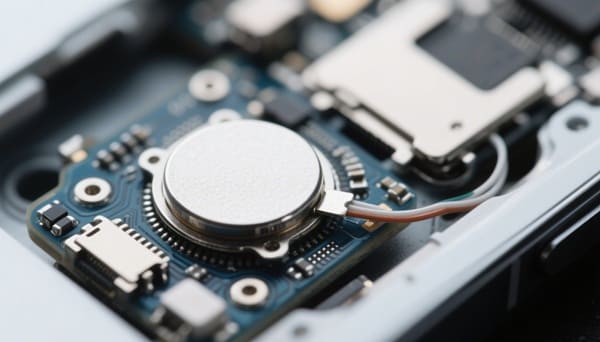Are Piezoelectric Ceramics the Future of Electronics?
The electronics industry is undergoing rapid transformation, driven by the demand for smaller, smarter, and more energy-efficient devices. Piezoelectric ceramics have emerged as critical materials enabling this evolution by converting mechanical stress into electrical signals and vice versa. Their unique electromechanical properties make them indispensable in sensors, actuators, and transducers found in consumer electronics, healthcare devices, automotive systems, and industrial automation. As modern electronics integrate more intelligent, responsive, and sustainable components, understanding the role and future potential of piezoelectric ceramics is essential. This article explores their working principles, advantages, challenges, and why they could define the future of electronics.
At Advanced Ceramic Hub, we specialize in high-quality Piezoelectric Ceramics products, ensuring optimal performance for industrial and scientific applications.

What Are Piezoelectric Ceramics and How Do They Work?
Piezoelectric ceramics are crystalline materials that produce an electrical charge when subjected to mechanical stress, and conversely, deform when an electric field is applied. Common piezoelectric ceramics include lead zirconate titanate (PZT), barium titanate (BaTiO₃), and potassium niobate (KNbO₃). Their crystal structures lack a center of symmetry, enabling charge displacement under pressure.
| Material | Piezoelectric Constant (pC/N) | Curie Temperature (°C) | Typical Use Cases |
| PZT (Lead Zirconate Titanate) | 300–600 | ~350 | Actuators, sensors |
| BaTiO₃ (Barium Titanate) | 150–200 | ~120 | Transducers, capacitors |
| KNbO₃ (Potassium Niobate) | ~120 | ~210 | Lead-free applications |
The piezoelectric constant (d₃₃) measures the efficiency of mechanical-to-electrical energy conversion. Curie temperature indicates the maximum operational temperature before the piezoelectric effect disappears. These properties directly impact device performance.
Explore our high-quality ceramic products.
Why Are Piezoelectric Ceramics Important in Modern Electronics?
Piezoelectric ceramics enable solid-state replacements for traditional mechanical components, drastically reducing size and improving durability. Their applications range from precise sensing in medical ultrasound to vibration control in smartphones. Additionally, piezoelectric materials support energy harvesting, powering small IoT devices through ambient mechanical energy.
Key Functions of Piezoelectric Ceramics in Electronics:
- Signal sensing and feedback
- Ultrasonic transmission
- Vibration suppression
- Energy harvesting for IoT devices
- Precision micro-movement control in robotics
Their multifunctionality accelerates innovation across industries by integrating sensing and actuation in compact, reliable forms.
What Are the Advantages of Using Piezoelectric Ceramics?
Piezoelectric ceramics provide unmatched sensitivity and miniaturization potential. Their fast response times enable real-time control in complex systems, while low power consumption supports sustainable device design. Unlike mechanical systems, piezo ceramics endure harsh environments with minimal wear.
| Feature | Piezoelectric Ceramics | Traditional Components |
| Response Time | Milliseconds | Seconds or slower |
| Power Consumption | Very low | Moderate to high |
| Wear & Tear | Minimal (solid-state) | Mechanical failure risk |
| Size | Compact | Bulky |
These advantages facilitate innovation in sectors where space, speed, and efficiency are critical.
What Is the Manufacturing Process of Piezoelectric Ceramics?
Manufacturing begins with mixing raw powders such as lead oxide, zirconia, and titanates, followed by calcination to form the base ceramic. Shaping techniques include dry pressing, tape casting, or extrusion. High-temperature sintering densifies the ceramic. Electrical poling, applying strong DC fields, aligns domains to activate piezoelectricity. Finally, electrodes are applied, and devices are packaged.
Key Manufacturing Steps:
- Raw powder mixing and calcination
- Shaping (dry press, tape casting)
- High-temperature sintering
- Electrical poling with strong DC fields
- Electrode application and packaging
Recent shifts focus on lead-free materials and environmentally friendly processes to meet regulatory demands.
What Makes Piezoelectric Ceramics Suitable for Emerging Applications?
Piezoelectric ceramics excel in emerging technologies requiring compact, energy-efficient, and precise actuation or sensing. IoT devices use piezo ceramics for self-powered sensors. Medical imaging relies on their high sensitivity for ultrasound. Robotics leverages fast micro-actuation. Automotive sensors benefit from their durability in harsh environments.
| Application Area | Use Case | Ceramic Benefit |
| Medical Devices | Ultrasound imaging | Precision, biocompatibility |
| IoT Devices | Self-powered sensors | Energy harvesting |
| Robotics | Micro-actuators | Fast motion control |
| Automotive | Fuel injection sensors | Heat and vibration resilience |
Piezo ceramics continue to push boundaries in high-tech sectors demanding miniaturization and reliability.
How Do Piezoelectric Ceramics Compare to Other Functional Materials?
Comparing piezoelectric ceramics to polymers, magnetostrictive alloys, and quartz crystals reveals trade-offs in performance, cost, and durability.
| Property | Piezoelectric Ceramics | Electrostrictive Polymers | Magnetostrictive Alloys | Quartz |
| Piezo Coefficient (d₃₃) | High | Low | Medium | Low |
| Operating Temp Range | Wide | Narrow | Moderate | Low |
| Cost | Moderate | Low | High | Moderate |
| Durability | High | Low | Medium | High |
Piezo ceramics offer superior piezoelectric performance and thermal stability, making them preferred for many demanding applications.
What Are the Challenges and Limitations of Piezoelectric Ceramics?
Despite advantages, piezo ceramics have inherent brittleness and complex manufacturing. PZT contains lead, posing environmental concerns. Polarization decay over time can degrade performance. High cost and limited strain output restrict some applications.
Current Limitations:
- Fragile under mechanical shock
- Lead content in traditional PZT materials
- Depolarization above Curie temperature
- Expensive production and processing
- Limited mechanical strain for large displacements
Ongoing research targets tougher, lead-free ceramics with improved performance.
How Do Piezoelectric Ceramics Compare to Other Ceramics?
When compared to alumina, zirconia, and silicon nitride, piezoelectric ceramics differ fundamentally in function and properties.
| Property | Piezoelectric Ceramics | Alumina (Al₂O₃) | Zirconia (ZrO₂) | Silicon Nitride (Si₃N₄) |
| Function | Electromechanical | Structural | Structural | Structural |
| Hardness (GPa) | Moderate (~15-25) | High (~18) | Moderate (~12) | High (~16) |
| Thermal Stability | Moderate | High | Moderate | High |
| Electrical Behavior | Active (piezoelectric) | Insulator | Insulator | Semiconductor |
Piezo ceramics uniquely enable energy conversion, unlike structural ceramics primarily used for mechanical strength.
Request a custom quote for piezoelectric ceramic products.
Are Piezoelectric Ceramics the Future of Electronics?
The future of electronics is increasingly dependent on intelligent, adaptive materials. Piezoelectric ceramics fit perfectly with trends toward wearable tech, miniaturized sensors, and self-powered devices. Lead-free developments and advanced manufacturing like 3D printing expand their potential.
Trends Supporting Adoption:
- Growth of smart wearables and medical diagnostics
- Demand for low-power MEMS sensors
- Development of eco-friendly lead-free ceramics
- Compatibility with advanced ceramic 3D printing
- Integration with AI-driven responsive systems
These drivers forecast a growing, integral role for piezoelectric ceramics in future electronics.
FAQ
| Question | Answer |
| What are piezoelectric ceramics made of? | Commonly PZT, BaTiO₃, or lead-free compounds like KNbO₃. |
| Are all piezoelectric ceramics lead-free? | No, lead-based versions still dominate but lead-free alternatives are increasing. |
| Can piezoelectric ceramics generate electricity? | Yes, they produce voltage when mechanical stress is applied. |
| Where are piezoelectric ceramics most used? | In sensors, actuators, medical devices, and ultrasonic systems. |
| Are piezoelectric ceramics expensive? | Prices vary; lead-based types are cheaper, lead-free tend to cost more due to processing. |
Conclusion
Piezoelectric ceramics are rapidly transitioning from niche materials to key enablers of the future’s smart, compact, and sustainable electronics. Their exceptional electromechanical properties facilitate applications across healthcare, automotive, robotics, and IoT industries. Though challenges like brittleness and lead toxicity remain, continuous innovation in lead-free formulations and manufacturing techniques is overcoming these hurdles. As the push for energy efficiency, miniaturization, and environmental responsibility grows, piezoelectric ceramics are poised to become foundational materials that power the next wave of electronic technology advancements.
Looking for high-quality piezoelectric ceramic products? Contact us today!
